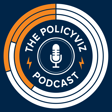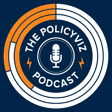
Be a Better Presenter with Andrea Pacini
Andrea Pacini is the author of the best-selling book Confident Presenter, a presentation coach and Head of Ideas on Stage UK. He specializes in working with business owners, leaders and their teams who want to become more confident presenters. Since 2010 Ideas on Stage has worked with thousands of clients around the world, including organizations like Microsoft, Spotify, eBay, The World Bank and over 500 TEDx speakers. Andrea is on a mission to stop great ideas from failing just because of the way they are presented. His vision is to help hundreds of thousands of business leaders inspire their audiences, increase their influence, and make a positive impact in the world.
Check out more links, notes, transcript, and more at the PolicyViz website.
Sponsor: Nom Nom
Nom Nom delivers fresh food made with whole ingredients, backed by veterinary science. And science tells us that dog health starts in the bowl so improving their diet is one of the best ways to help them live a long, happy life. All you have to do is order, pour and serve.

